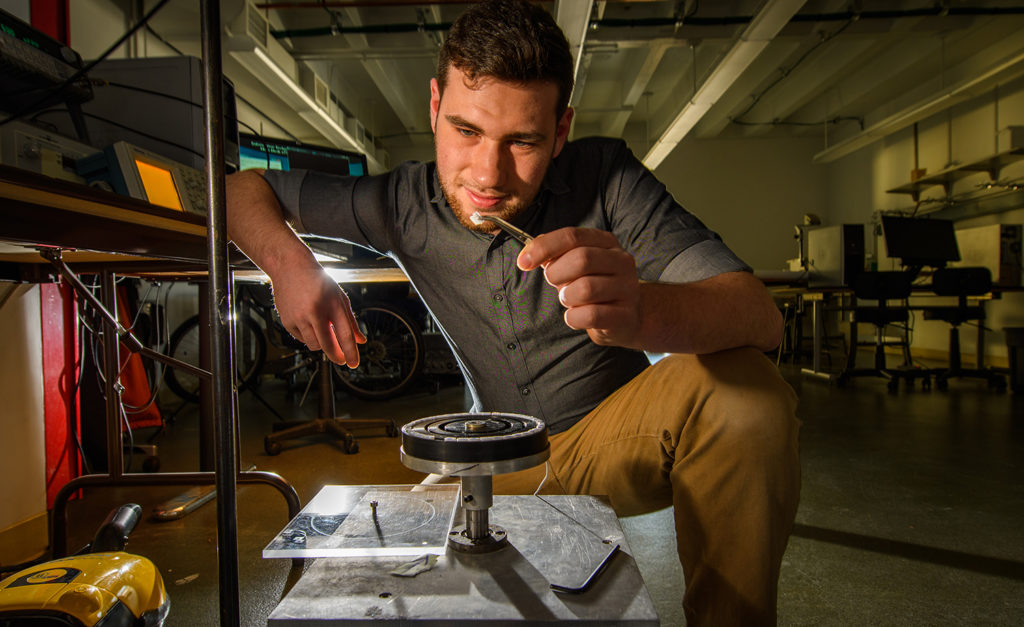Curiosity drives senior’s research into traffic patterns

As a child, Clark University senior Greg Jones was puzzled by traffic patterns.
He asked his parents why there was always traffic on the highway. “Most of the time, the answer I would get was, ‘Because there are a lot of cars,’ but I didn’t like that answer,” he says. “I could never understand why the simple fact that there were more cars would make everybody hit their brakes.”
Now, years later, he continues to ask these questions — but this time, his answers are based on scientific evidence.
Jones, who is majoring in physics with a minor in mathematics, embarked on a research project in his junior year to explore the formation and characteristics of single-lane traffic systems. Thanks to funding and support from the Clark LEEP Center (Liberal Education and Effective Practice), he presented his ongoing research at last November’s Fall Fest, a showcase for undergraduates’ academic and creative work.
When deciding on his project, Jones says, he wanted to examine a real issue that impacts the community. Professor Arshad Kudrolli, his research adviser, offered him the opportunity to continue research begun by former graduate student Vikrant Yadav (Ph.D. ’15), who used polar rods to create a similar phenomenon and study the motion of self-propelled particles. Jones says he was thrilled to take over the work and become a part of Kudrolli’s lab.
In the lab, Jones worked on a model to show the manner in which density-driven traffic jams form, as well as their characteristics after formation. His project uses 3D printing systems to study this issue, with a focus on single lane traffic systems and their origins.
“The small self-propelled particles move forward when placed on a vibrating track,” he explains. “Then I add more and more particles to the track until we start to see traffic build up, just like on a real-life highway.” He designed and 3D-printed these particles using the 3D printer operated by the Clark Makers Club.
Jones was able to video the self-propelled particles in the track, and analyzed them using a combination of tracking software and codes, which he wrote himself. “We have gotten a lot of great data,” he says, “and we are on the horizon of some really exciting conclusions.”
In a nutshell, he explains, “We want to know why and how traffic jams form, and if there is anything that we can do to make traffic move faster.”
Watch Greg Jones discuss his research, which he presented at Fall Fest 2018
Jones attributes much of his success to the guidance he received in Kudrolli’s lab, including graduate students and his undergraduate peers. “Even though everyone on the team is working on something different, we constantly help each other out — whether it’s a quick answer to a question of an hour-long discussion about which direction our research should take.”
Kudrolli, he adds, “leads a great team of people, and he’s always happy to share his wealth of experience in the fields of granular materials and fluid dynamics with me.”
While the knowledge of Professor Kudrolli and his team served as an important resource, Jones values the intellectual freedom he was given. “I was lucky to get my own project in the lab,” and to learn the ups and downs of academic research firsthand.
After graduating in May, Jones will pursue a master of arts in teaching through Clark’s Accelerated B.A./Master’s Degree Program. He hopes to share his curiosity and passion for physics with his future students. “I hope to someday inspire students to be curious enough to embark on their own research, and finally get some answers to the questions they’ve been asking for years.”


